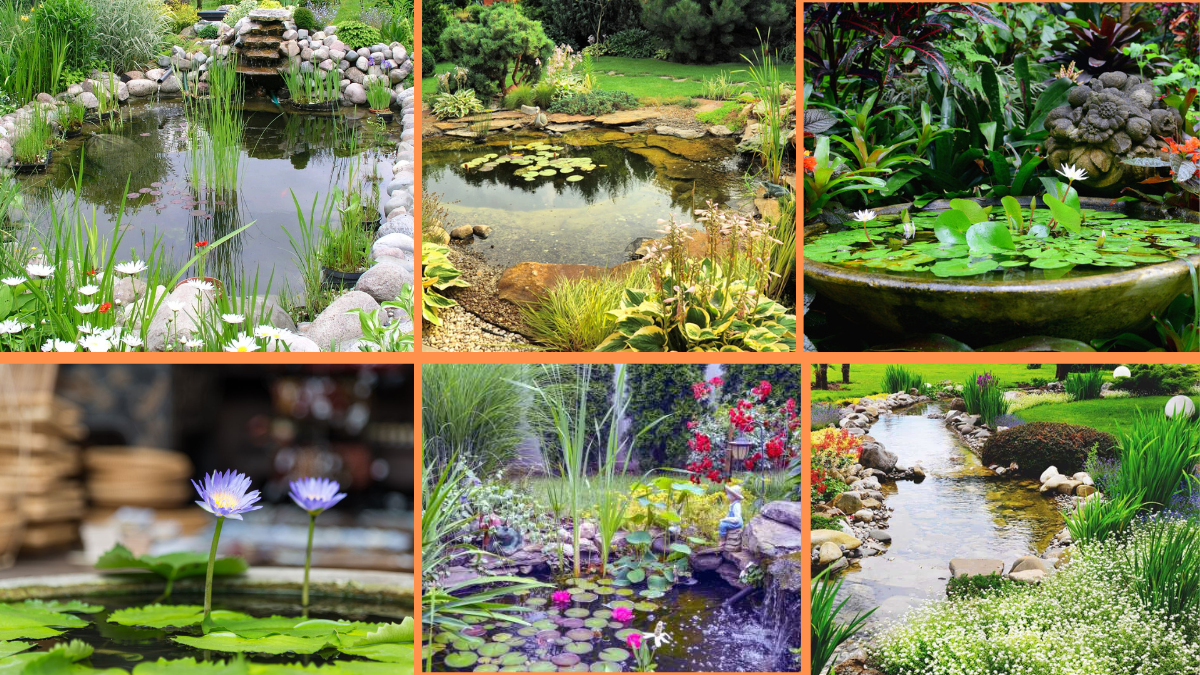If you’re looking to bring tranquility, movement, and natural beauty into your garden, a water garden filled with flowering plants is one of the most rewarding ways to do it. The gentle sounds of water combined with the vibrant colors and scents of blooms create a sensory paradise that attracts birds, butterflies, and beneficial insects. Whether you have a small patio pond, a backyard water feature, or a spacious garden pond, you can easily turn it into a captivating focal point with the right approach.
In this guide, we’ll share 10 expert tips to help you create a stunning water garden with flowers — whether you’re a beginner or a seasoned gardener looking to refresh your space.
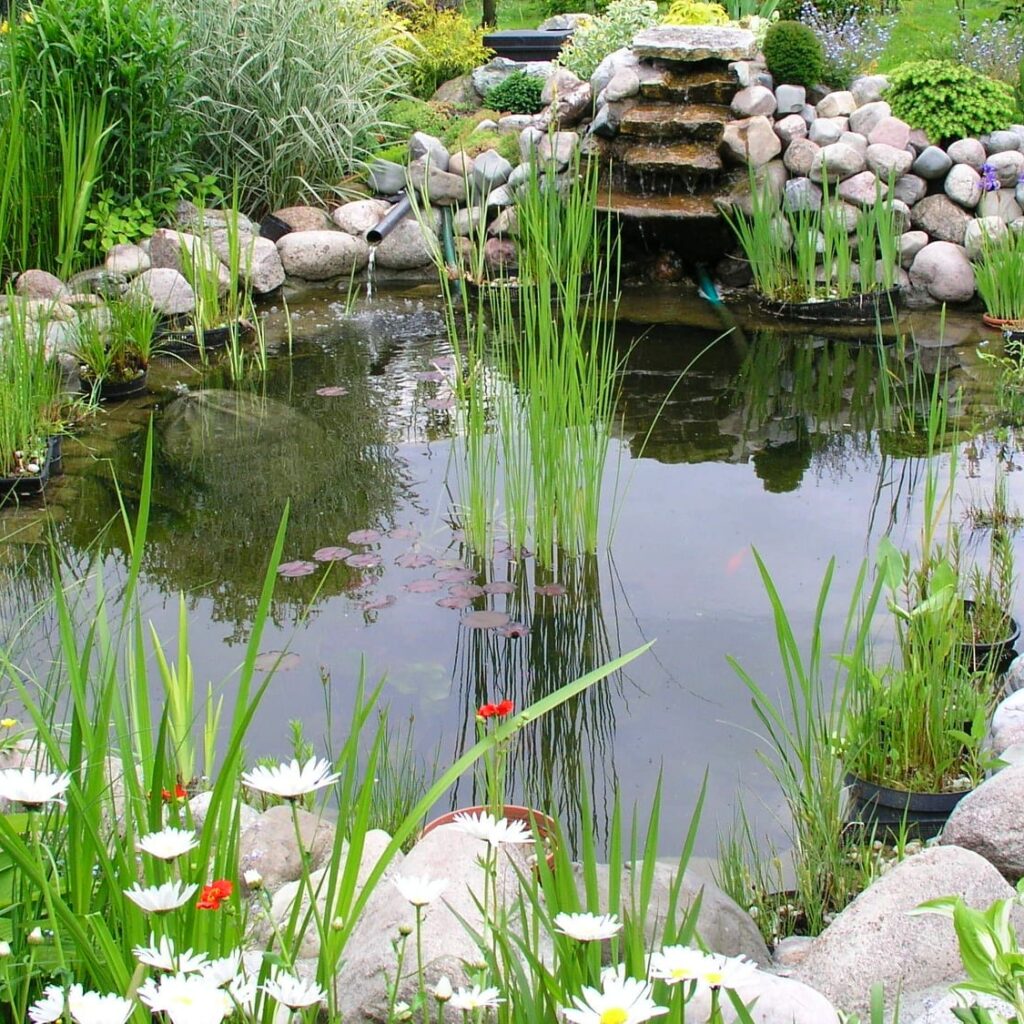
1. Choose the Right Location
The first step to a successful water garden is selecting the perfect spot. Ideally, choose a location that gets at least 4–6 hours of sunlight a day, as most aquatic flowering plants like water lilies and lotus need ample sunlight to bloom.
However, avoid placing your pond directly under large trees. Falling leaves and debris can clog the water and increase maintenance. A spot with partial afternoon shade can also be beneficial in hot climates, preventing water from overheating.
Bonus Tip:
Consider sight lines from your patio, kitchen window, or seating areas so you can enjoy your water garden from multiple perspectives.
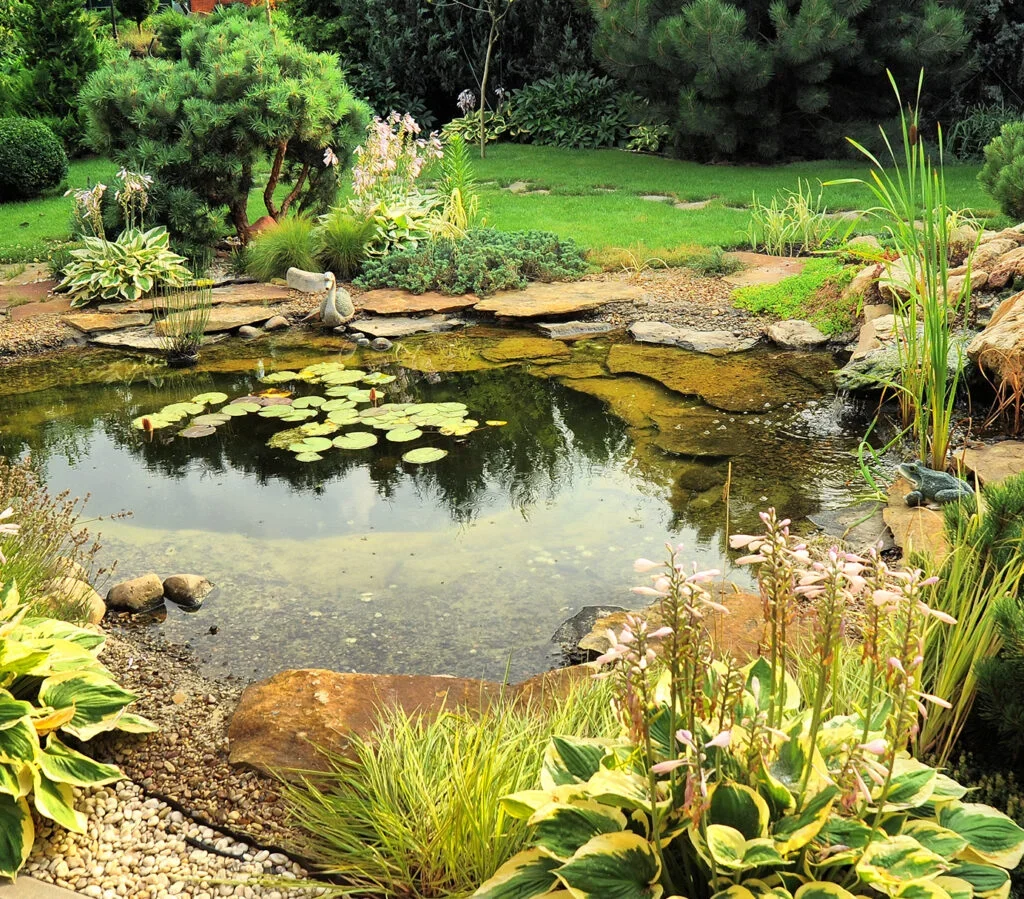
2. Pick a Pond Type That Suits Your Space
Water gardens come in various sizes and styles — from large naturalistic ponds to compact container water gardens on a balcony. Decide what works best for your garden layout, budget, and maintenance capacity.
Popular Options:
- Preformed pond liners: Easy to install, available in multiple shapes.
- Flexible pond liners: Customizable size and shape.
- Barrel or tub gardens: Great for patios and small yards.
Adding a water pump or small fountain enhances oxygenation, reduces algae buildup, and adds soothing sound.
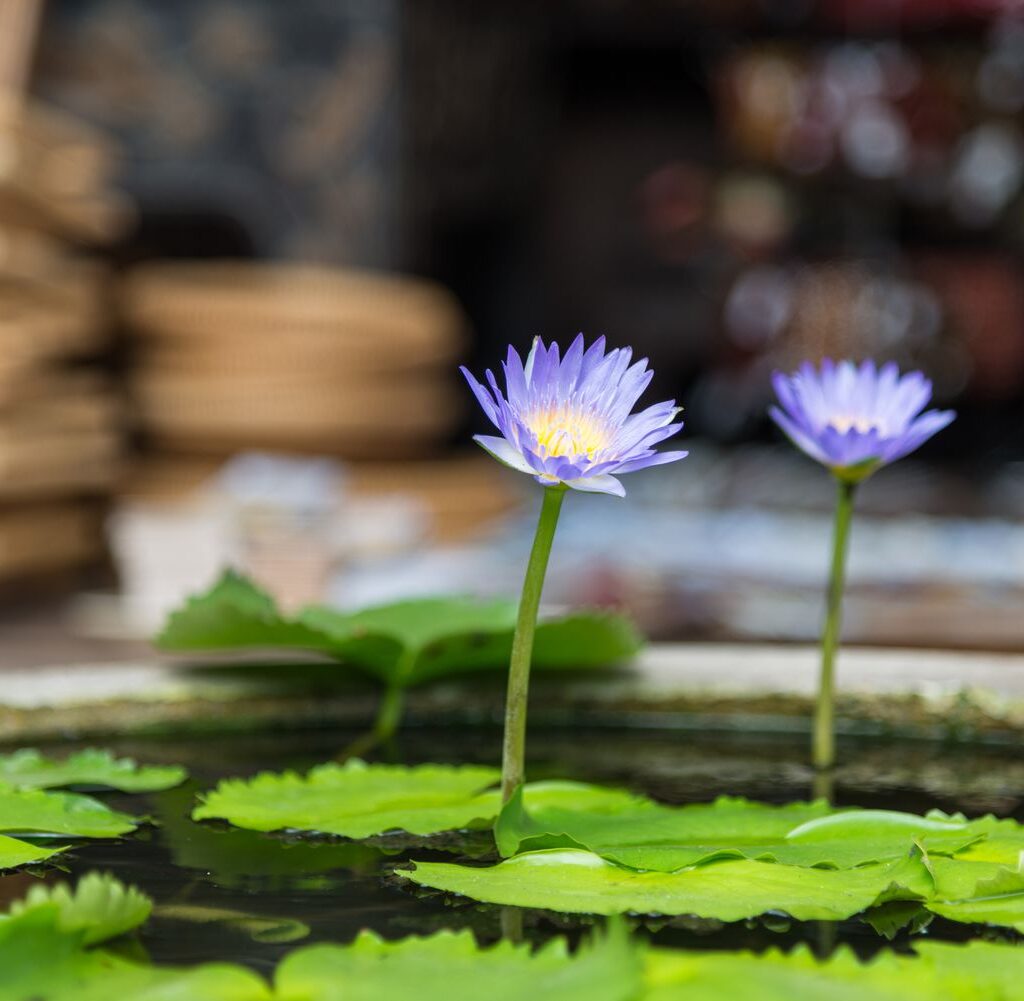
3. Select a Variety of Aquatic Flowering Plants
To create a visually captivating water garden, include a mix of plant types with varying textures, heights, and bloom times. Aquatic plants are typically categorized into four types:
- Floating plants: Free-floating; roots dangle in water (e.g., Water Hyacinth, Duckweed).
- Submerged plants: Grow underwater, oxygenating the pond (e.g., Hornwort, Anacharis).
- Marginal plants: Thrive at pond edges or shallow areas (e.g., Canna Lily, Pickerelweed).
- Surface plants: Rooted in soil but leaves/flowers float (e.g., Water Lilies, Lotus).
A good mix ensures year-round interest, ecological balance, and healthier water.
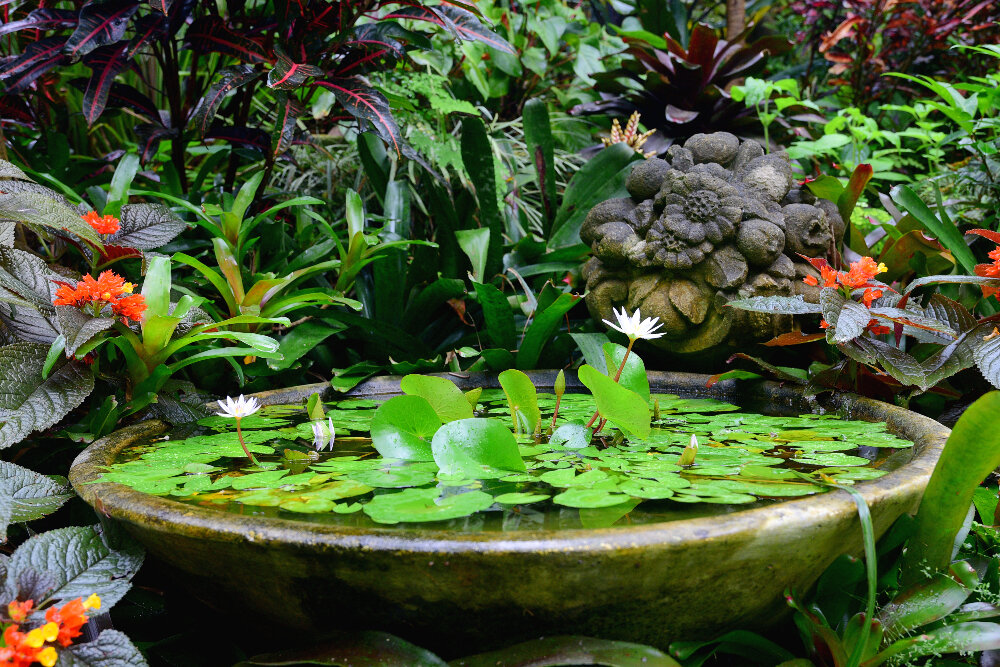
4. Use Containers or Planting Baskets
Most flowering aquatic plants thrive when contained in baskets or aquatic pots filled with heavy clay soil or aquatic compost. This prevents aggressive spreading and makes repositioning or seasonal care much easier.
Pro Tip:
Top off the soil with a layer of pea gravel to keep it from clouding the water and deter fish from digging.
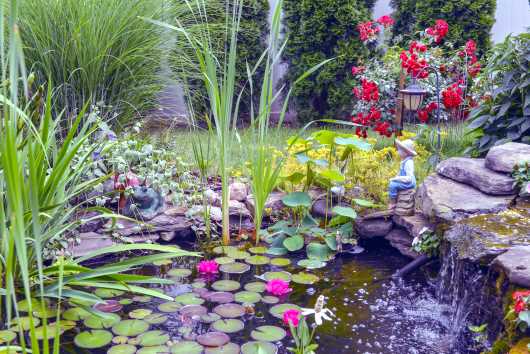
5. Balance Your Planting Scheme
For a harmonious look, combine plants of various heights, shapes, and bloom colors.
Tall, vertical plants like Iris and Canna Lilies add structure. Floating flowers such as Water Lilies soften the water’s surface, while low-growing marginal plants like Marsh Marigold fill gaps at the edges.
Design Formula:
- 50% floating/surface plants
- 30% marginal flowering plants
- 20% submerged oxygenating plants
This balance helps reduce algae, maintain oxygen levels, and offer visual variety.
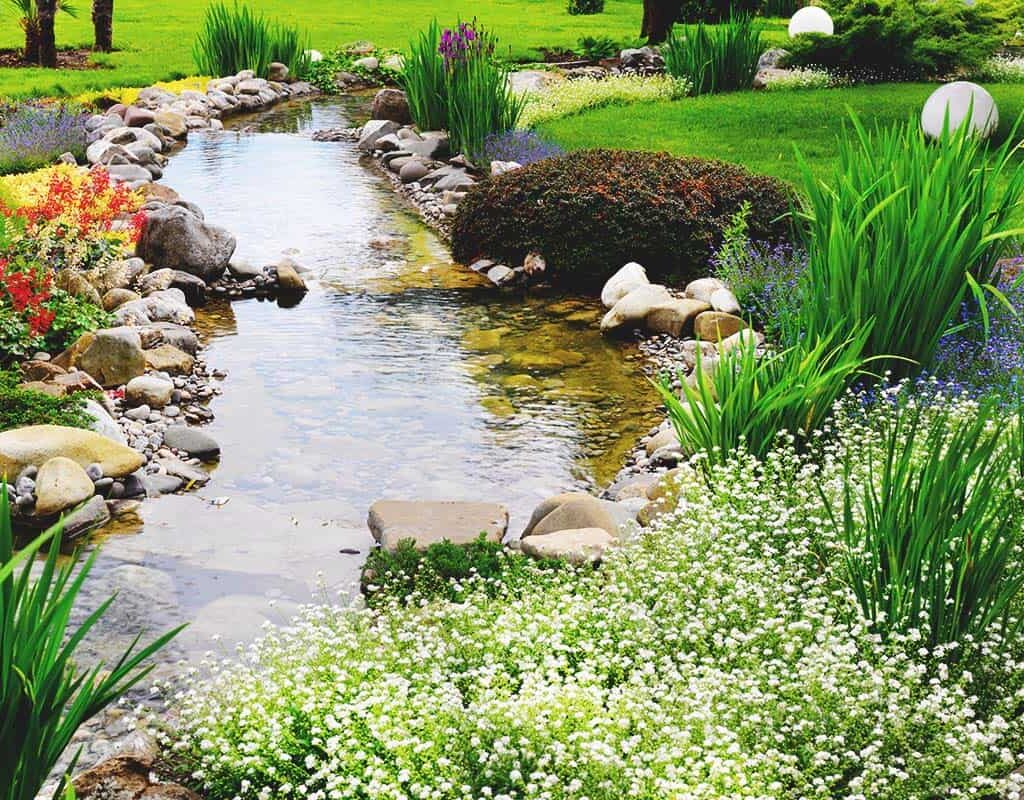
6. Consider Blooming Seasons for Year-Round Color
Plan your water garden so something is always blooming. Mix early, mid, and late-season bloomers to keep your pond lively throughout spring, summer, and early fall.
Examples:
- Early Bloomers: Marsh Marigold, Water Hawthorn
- Mid-Season: Water Lilies, Pickerelweed
- Late Season: Canna Lily, Blue Flag Iris
Adding some evergreen aquatic plants ensures off-season texture and color.
7. Maintain Proper Water Depth
Different aquatic plants thrive at varying water depths, so it’s essential to understand each species’ preference before planting.
Depth Guidelines:
- Water Lilies/Lotus: 12-24 inches
- Marginal Plants: 0-12 inches
- Submerged Plants: 12-24 inches
- Floating Plants: Surface only
Use bricks, stands, or submerged shelves to adjust plant heights as needed for optimal growth and visual layering.
8. Keep Water Clean and Clear
Healthy water is vital for flowering aquatic plants. Clear water ensures sunlight reaches submerged plants and reduces algae.
Maintenance Tips:
- Skim floating debris regularly.
- Use a biological filter or pond pump for circulation.
- Avoid overfeeding fish, as waste promotes algae.
- Introduce floating plants like Water Hyacinths to naturally absorb excess nutrients.
Adding submerged oxygenating plants like Anacharis helps maintain water clarity by producing oxygen and reducing algae growth.
9. Attract Pollinators and Wildlife
A water garden is a magnet for dragonflies, butterflies, frogs, and birds. Choose nectar-rich aquatic flowers and provide shallow areas or marginal plantings where wildlife can safely land or perch.
Pollinator-Friendly Aquatic Flowers:
- Water Lilies
- Pickerelweed
- Marsh Marigold
- Lotus
- Blue Flag Iris
Avoid chemical pesticides and fertilizers near your pond to keep it wildlife-safe and ecologically balanced.
10. Add Decorative Elements and Lighting
To enhance your water garden’s atmosphere, incorporate ornamental elements like floating lanterns, small statues, or decorative rocks. At night, install soft underwater LED lights or solar-powered lanterns to create a magical glow.
Lighting Ideas:
- Submerged spotlights to highlight Water Lilies.
- Solar lights around pond edges.
- Floating candles or waterproof LED balls for evening ambience.
The gentle reflection of flowers on the illuminated water surface can transform your outdoor space into a serene retreat after dark.
Final Thoughts
Creating a water garden with flowers is a delightful, rewarding project that adds peace, beauty, and life to any outdoor space. By selecting the right mix of aquatic plants, understanding their unique growing needs, and providing a balanced, clean water environment, you’ll enjoy a lush floral display that evolves through the seasons.
Whether it’s a simple tub garden on your balcony or a fully landscaped backyard pond, these tips will help you design a water garden that thrives and enchants for years to come.
Would you like a follow-up guide on “10 Easiest Aquatic Plants for Beginners” or “How to Care for Water Lilies Year-Round”? Let me know — I’d be happy to write it for you!
